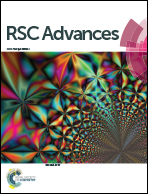Understanding human salivary esterase activity and its variation under wine consumption conditions†
Abstract
Salivary esterase enzymes have been related to the in vitro hydrolysis of carboxylic esters associated with fruity and pleasant aroma nuances in many types of wine. However, very little is known about human total salivary esterase activity (TSEA) under physiological conditions. The purpose of this study is to gain understanding of TSEA and its relevance under wine consumption conditions. To do this, a methodology for TSEA measurement was optimised and applied to examine inter-individual differences (n = 10). Furthermore, TSEA was correlated with other salivary parameters (flow, pH, total protein content). The effect of the oral exposure to different types of wine-like solutions with different composition (ethanol, phenolic and aroma compounds) on TSEA was also assessed. Results showed large inter-individual differences, up to 86%, on TSEA values. Additionally, TSEA was positively correlated with the total salivary protein content (TPC) and negatively correlated with salivary pH and flow. After the oral exposure to wine-like solutions, the combined presence of ethanol, carboxylic esters and phenolic compounds produced the highest TSEA value. Results from this work prove that human salivary esterase is active during wine consumption, and adds support to the involvement of this enzymatic activity on wine aroma perception during wine intake, which will require future studies.



 Please wait while we load your content...
Please wait while we load your content...